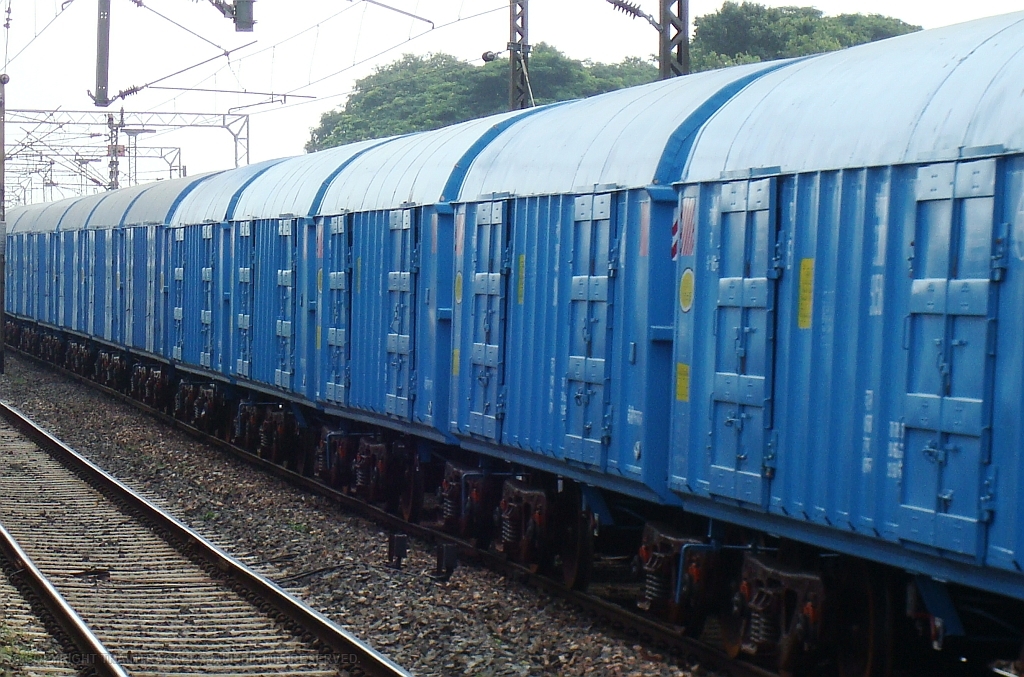
Bogie Cover Wagons with Heavy Loading Capacity --- Length reduced, width and height increased than BCNA. Equipped with IRS:M44 body, Flat centre Pivot, K-type CBB, improved coupler & draft gear, Brake cylinder 300 mm, IRSA 750 slack adjuster, A.R. 75 liters, PU painting (Phirozi). This wagon fitted with twin pipe graduated release air brake system, high tensile non transition type CBC and CASNUB 22 HS Bogie with latest amendment. Capacity - 70.37 Tonnes. Type - BCNHL.
As the BCNHL with prototype doors recurred problems, in the meantime some other door designs were used in limited numbers on the BCNHL wagons. Design alteration Pressed Door Design-4 hinges Variant-II (as seen in the picture above) was developed by RDSO in June-2009 and manufacture by BESCO.
Twin Pipe Graduated Release Air Brake System - Some of the Air Brake goods stock is fitted with this kind of braking system. Twin pipe graduated release air brake system. In Twin pipe, brake pipes and feed pipes of all wagons are connected. Also all the cut off angle cocks are kept open except the front cut off angle cocks of BP/ FP of leading loco and rear end cut off angle cock of BP and FP of last vehicle. Isolating cocks on all wagons are also kept in open condition. Auxiliary reservoir is charged to 6.0 Kg/cm2 through the feed pipe.
For application of brakes, the pressure in brake pipe has to be dropped. This is done by venting air from driver's brake valve. Reduction in brake pipe pressure positions the distributor valve in such a way that the control reservoir gets disconnected from brake pipe and auxiliary reservoir gets connected to brake cylinder. This results in increase in air pressure in brake cylinder resulting in application of brakes. The magnitude of braking force is proportional to reduction in brake pipe pressure.
For releasing brakes, the brake pipe is again charged to 5 kg/cm2 pressure by compressor through driver's brake valve. This action positions distributor valve in such a way that auxiliary reservoir gets isolated from brake cylinder and brake cylinder is vented to atmosphere through distributor valve and thus brakes are released.


